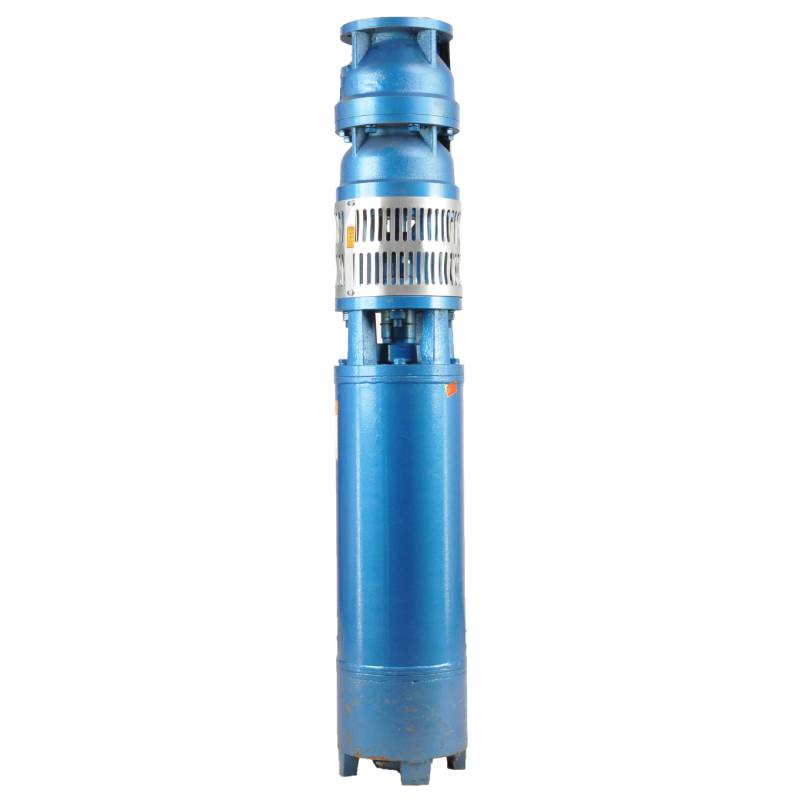Nov . 05, 2024 19:04 Back to list
3/4 hp submersible pump
Understanding the 3/4 HP Submersible Pump A Comprehensive Guide
In the realm of water management, the submersible pump has emerged as a crucial tool for various applications, from residential to industrial uses. Among the various types of submersible pumps available on the market, the 3/4 HP submersible pump stands out as a popular choice due to its balance of power, efficiency, and versatility. In this article, we will explore the features, applications, advantages, and maintenance tips for a 3/4 HP submersible pump.
What is a Submersible Pump?
A submersible pump is a device designed to be submerged in water or other liquids. Unlike traditional pumps, which draw water from above, submersible pumps operate underwater. These pumps are hermetically sealed, which prevents moisture from entering the motor and minimizes the risk of damage. Essentially, the pump pushes water to the surface rather than pulling it, making it highly efficient for lifting water from deep wells, basements, and other submerged applications.
Key Features of 3/4 HP Submersible Pumps
1. Power and Performance The 3/4 HP designation indicates the pump's motor power, specifically 0.75 horsepower. This level of power is suitable for medium to heavy-duty applications, making it ideal for dewatering, irrigation, and sewage handling. 2. Flow Rate Typically, a 3/4 HP submersible pump can move anywhere from 20 to 40 gallons of water per minute, depending on the specific model and the depth from which it is drawing water. This makes it effective for both residential and small commercial uses.
3. Durability Many 3/4 HP submersible pumps are constructed from corrosion-resistant materials, such as stainless steel and thermoplastic, ensuring a longer lifespan even in challenging environments.
4. Versatility Whether used in wells, ponds, or for drainage purposes, these pumps can handle various types of liquids, including clean water and muddy water.
Applications
3/4 HP submersible pumps serve a multitude of purposes, including
- Residential Use Ideal for draining basements, emptying flooded areas, or providing irrigation for gardens and lawns. - Agricultural Use Essential for transferring water from wells to fields, thereby supporting irrigation systems. - Construction Sites Useful for dewatering excavations and maintaining dry working conditions.
Advantages of Using a 3/4 HP Submersible Pump
3/4 hp submersible pump

1. Efficiency Submersible pumps are designed to minimize energy consumption while maximizing performance. The ability to push water instead of pulling it contributes to this efficiency.
2. Space-saving Design Due to their compact size, submersible pumps can be installed in tight spaces, making them suitable for areas where traditional pumps cannot be used.
3. Reduced Noise Levels These pumps generally operate quietly since they are submerged in the water, making them less disruptive in residential or quiet environments.
4. Easy Installation Many models are designed for straightforward installation, often requiring minimal tools and effort.
Maintenance Tips
To ensure longevity and optimal performance of a 3/4 HP submersible pump, consider the following maintenance tips
1. Regular Inspection Check the pump periodically for any signs of wear or damage. Look for cracks in the casing or frayed wires.
2. Clean the Intake Screen Debris can obstruct water flow, so ensure that the intake screen is clear and free of blockages.
3. Check the Power Supply Make sure the pump is receiving the correct voltage and that all connections are secure.
4. Store Properly If you plan to store the pump for a season, clean it thoroughly and store it in a dry place to avoid rust and corrosion.
In conclusion, a 3/4 HP submersible pump is a valuable asset for anyone in need of a reliable water management solution. With the ability to handle various tasks efficiently, it is a versatile choice for both residential and commercial applications. By understanding its features, applications, and proper maintenance, users can maximize the benefits of this powerful tool.
-
Submersible Water Pump: The Efficient 'Power Pioneer' of the Underwater World
NewsJul.01,2025
-
Submersible Pond Pump: The Hidden Guardian of Water Landscape Ecology
NewsJul.01,2025
-
Stainless Well Pump: A Reliable and Durable Pumping Main Force
NewsJul.01,2025
-
Stainless Steel Submersible Pump: An Efficient and Versatile Tool for Underwater Operations
NewsJul.01,2025
-
Deep Well Submersible Pump: An Efficient 'Sucker' of Groundwater Sources
NewsJul.01,2025
-
Deep Water Well Pump: An Efficient 'Sucker' of Groundwater Sources
NewsJul.01,2025
-
 Submersible Water Pump: The Efficient 'Power Pioneer' of the Underwater WorldIn the field of hydraulic equipment, the Submersible Water Pump has become the core equipment for underwater operations and water resource transportation due to its unique design and excellent performance.Detail
Submersible Water Pump: The Efficient 'Power Pioneer' of the Underwater WorldIn the field of hydraulic equipment, the Submersible Water Pump has become the core equipment for underwater operations and water resource transportation due to its unique design and excellent performance.Detail -
 Submersible Pond Pump: The Hidden Guardian of Water Landscape EcologyIn courtyard landscapes, ecological ponds, and even small-scale water conservancy projects, there is a silent yet indispensable equipment - the Submersible Pond Pump.Detail
Submersible Pond Pump: The Hidden Guardian of Water Landscape EcologyIn courtyard landscapes, ecological ponds, and even small-scale water conservancy projects, there is a silent yet indispensable equipment - the Submersible Pond Pump.Detail -
 Stainless Well Pump: A Reliable and Durable Pumping Main ForceIn the field of water resource transportation, Stainless Well Pump has become the core equipment for various pumping scenarios with its excellent performance and reliable quality.Detail
Stainless Well Pump: A Reliable and Durable Pumping Main ForceIn the field of water resource transportation, Stainless Well Pump has become the core equipment for various pumping scenarios with its excellent performance and reliable quality.Detail
